

























































Next year sees the 40th anniversary of the introduction of Activities Week to the School, by former Headmaster Dr John Wroughton.”




























































Next year sees the 40th anniversary of the introduction of Activities Week to the School, by former Headmaster Dr John Wroughton.”




warm welcome to this year’s edition of the OElink!
Having recently returned from a holiday break in Ireland, I was reminded of the happy times I had visiting different places in the UK and abroad when I was in the Combined Cadet Force (CCF) at KES. In those days it was the norm to join the CCF in the Second Form. Although 60 years have since passed, I still remember the trips to Wyke Regis in Dorset, Tweseldown in Hampshire, Horrabridge in Devon, Cultybraggan in Perthshire and Voss in Norway.
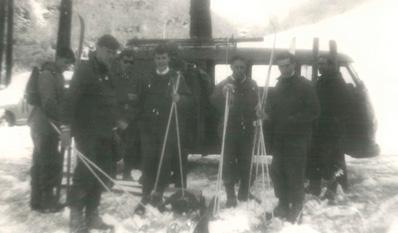
Dudley Thomas 1955-1964
At Wyke Regis we were guests of the Royal Engineers and spent our time making pontoons on the Fleet Lagoon. My memories of Tweseldown include the chaos caused when one of our officers threw a thunderflash which ignited the whole of the training area. On another occasion, we were required to stand in a long line, in what was supposed to be an identity parade, because a member of the public had been assaulted. We were inspected by Field Marshal Montgomery. This was going well, up until the moment Monty approached me in the line. As he reached me, the military band started to play the tune that used to open The Goon Show on the radio, the ‘Old Comrades’ march. I found it extremely difficult to keep a straight face!
The long journey up to Cultybraggan in Scotland was interspersed by Rupert Burton getting very excited when he spotted Highland cattle: “Look, Taff, buffaloes!” My final CCF summer camp was at Horrabridge and I recall us all enjoying a splendid dinner at the Bedford Hotel in Tavistock, generously provided by Bill Currie and his fellow officers. The best trip was probably the one to Norway. Eight of us were guests of the Norwegian army and they taught us to ski. Trevor Rhymes accompanied this trip, and it was a delight to get to know him better. Believe it or not, the cost of this trip was £9, which was the cost of the ferry from Newcastle to Bergen. Bill Currie had managed to obtain rail travel warrants from both the British and Norwegian armies.
I expect many of you will have nostalgic memories of the trips and activities you went on whilst at KES. Next year sees the 40th anniversary of the introduction of Activities Week to the School, by former Headmaster Dr John Wroughton. We are keen to hear your memories of Activities Week or other KES trips you went on, so please contact us at alumni@kesbath.com and we will share them in next year’s issue.

As well as travel opportunities opening up again, I have been very pleased to see that universities are catching up on their graduation ceremonies and, importantly, moving to reinstate live lectures and faceto-face activities across all subjects. My thoughts have been with OEs at university during the pandemic, and I hope that all the young OEs currently studying, and the newest leavers joining them this autumn, will be able to enjoy a full university experience again.
My thanks to the OE Committee and the School for all their efforts and the support they give to the Old Edwardians’ Association. Please keep in touch with your news and any changes to your contact details, and we hope to see many of you at an OE event in the coming year.
Although 60 years have since passed, I still remember the trips to Wyke Regis in Dorset, Tweseldown in Hampshire, Horrabridge in Devon, Cultybraggan in Perthshire and Voss in Norway.

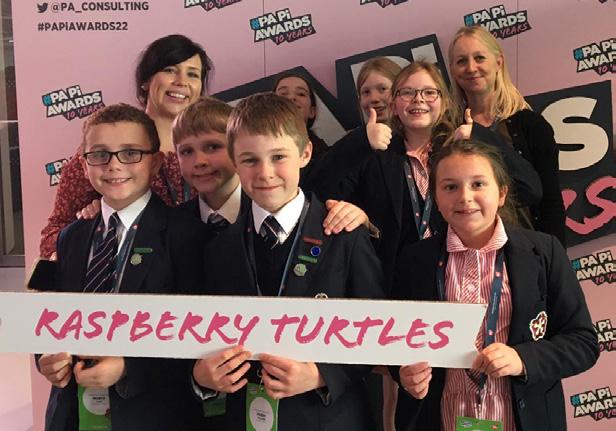
A creative team of Year 5 Computing pupils from the Junior School won the final of the 2022 Raspberry Pi Competition (Years 4-6 category), which was organised by PA Consulting and held at the Science Museum in London on 5th May.
Over 300 schools across the UK took part in the annual competition, which promotes Science, Technology, Engineering and Mathematics (STEM) education by challenging school children aged 8-18 to invent systems that could benefit society, using their engineering and coding skills and a Raspberry Pi microcomputer.

Celebrating its 10th anniversary, this year’s competition asked participants to invent innovations to help make the world a more sustainable place.
Keen to enter the competition, the Junior School team of seven Year 5 children worked hard to develop and code a system which helps to educate pupils about environmental and sustainability issues. Part of the team’s initiative is a recycling station which tells pupils which bin they need to put their recycling in and rewards them with house points when they recycle rubbish.
Mrs Sam Cook, ICT co-ordinator at the Junior School, said: “The final was a fantastic day for everyone involved. Our Year 5 pupils started
off with a tour of the Science Museum’s Wonderlab, where they got to try out lots of different technologies. They then set up their Raspberry Turtle stand with their project, using a Raspberry Pi computer. The expert judges from Microsoft, Rolls Royce, NHS Digital and other industry leaders then came round to examine their recycling project and ask questions. The pupils were brilliant and explained how their project would help reduce waste at school, encourage pupils to recycle, and reward them for doing so, as well as educating them on environmental and sustainability issues. They also explained how they had adapted their project to help support pupils with specific learning needs, with the help of a Bluetooth speaker.
“Throughout the day all our pupils got actively involved in all the activities and I couldn’t have been prouder of them. At the end of all the presentations by different teams, we nervously attended the awards ceremony, which was presented by Ortis Deley from The Gadget Show and had 100,000 people viewing online. After a nerve-racking wait the final three teams in the Years 4-6 age category were called out and the KES Raspberry Turtles were crowned the winners! Everyone was very excited and thrilled at being involved in this wonderful competition which promotes innovation and STEM opportunities for young people.”
The Warhammer Club were fortunate to be chosen for an OE Activity Award from the OE Committee earlier this year.
The award has provided the club, reborn after a few years’ absence due to Covid, with new scenery and rule books to help members play the games offered by Games Workshop in both the ‘Warhammer 40,000’ (or 40k, as it is called) and the ‘Age of Sigmar’ settings. On arrival, the group got their clippers out and eagerly put the scenery together to use it for a game, and they look forward to getting it fully painted this autumn. The new scenery now allows the group to play four games at once on fully decorated tables.
It’s great to see new life injected into the club over the last year with a group of keen Year 7 pupils joining. They have been the life and soul of the club and I am sure their enthusiasm will help the club continue to grow and allow more pupils to enjoy this hobby.
It was brilliant to round off the year with a trip to Warhammer World in Nottingham, where members of the club explored, built, painted and played. This allowed them to gain stamps for their battle honours books, for which they get prizes on completion.
I look forward to the coming year and what it will bring for the club!
Jon Garner-RichardsonThey have been the life and soul of the club and I am sure their enthusiasm will help the club continue to grow and allow more pupils to enjoy this hobby.”
The past year has been a very successful one for the Old Edwardians’ Association. The standout success has been the long-awaited return of our in-person reunion events. We certainly had some catching up to do after the enforced Covid hiatus, so our events were exceptionally well attended! It was a pleasure to welcome over 200 OEs back to KES for the Anniversary Reunions held in April and May, and the Summer Reunion in June.

We were heartened by the many positive comments from OEs and former staff, and to see so many of you refreshing and re-establishing personal connections across our community. Now that our events programme is back on track, we are looking forward to another exciting calendar of events for 2022-2023. The first of these is an open-house event for all OEs, their partners and children, plus current and former staff, hosted by OE Tom Bowles at Hartley Farm in Winsley on Saturday 15 October. Other highlights to note include an informal London event in the spring, and a large Anniversary Reunion on Saturday 22 April 2023 to celebrate the 10th, 20th, 30th, 40th and 50th leaving anniversaries for that year, with a summer gathering for OEs who left in the 1940s, 1950s and 1960s being planned for June.
A now regular feature of our support to the current school community is the OE Activity Award where we use OE funds to help the School’s clubs and societies. This year’s awards were given to the Warhammer Club to purchase equipment, to the CCF to purchase flutes and to the Creative Writing Club to fund an author workshop. The OE Committee really enjoys reading the requests written by pupils for such support and we are heartened to see our help further enriching extracurricular life at the School.
The value of the OE community to the current KES community, with the support it gives through talks and careers insight, continues to be recognised. A notable highlight was Dr Adam Kucharski (2005) giving the School’s annual Wroughton Lecture, and we have been delighted to see upwards of 70 OEs becoming involved with the School’s new Careers programme. As the world of work continues to change, I am thankful that OEs are giving their time to help the next generation of OEs find satisfying and impactful careers. To find out more about the School’s Careers programme and how OEs are providing support, please see the article by Julia Rees-Roberts overleaf.

Last year I wrote that the OE Committee has been investigating how the School can best secure its heritage. A small working group was established
to look at how we can protect the School’s existing historical assets, and secure the onward capture of archive information in the digital age to demonstrate our long and proud heritage to the OEs, current and future school community and historians. I am pleased to report that broad support from the School’s leadership has been secured for this. Activities are now underway to plan the best way forward in terms of managing and developing the KES archives, both physical and digital, to provide onward security and to better profile the long history of King Edward’s School.
I hope you enjoy this year’s OElink, so expertly curated by Claire Davies. Please keep in touch via our social media sites and tell us your news via email, post or phone calls. To join the OE mailing list to receive seasonal e-newsletters and event invites, please contact alumni@kesbath com
The stand-out success of the past year has been the longawaited return of our inperson reunion events.”
The new KES Careers programme got off to a flying start in 2021-2022. It began with the launch of the Inspiring Minds speaker series in September, which saw nearly 25 different speakers from our parent and OE community participating throughout the year. They covered diverse topics such as tackling environmental issues and reporting from war-torn regions of the world, through to a talk about the life of an MP from OE John Glen. All year groups have had the chance to hear from these speakers. Many spoke to pupils at assemblies to give a brief overview of their career, whilst others joined us for an hour or more and provided an in-depth look at their day-today working lives.


We were particularly keen both to broaden the understanding of different career routes and to challenge some of the stereotypes that still occur. A fantastic opportunity to do this arose during National Careers Week, when various staff and the Year 12 Careers prefects manned a Careers gazebo throughout the week, allowing pupils to ask questions relating to different careers each day.
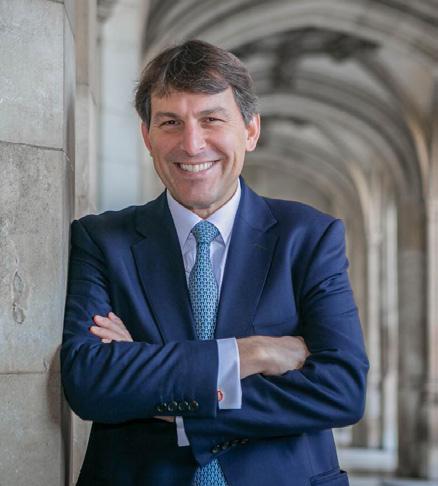

The largest event of the year was the biennial Careers Convention which took place in April. This was a huge success, with over 60 delegates, including over 20 former pupils, who represented a wide range of career specialisms. Over 350 pupils and parents from Years 1013 attended and the corridors of the School were buzzing with excitement and Careers-based conversations for many days afterwards! The parents, OEs and others involved provided invaluable support both before and after the event, with many coming forward to offer
further opportunities to our pupils afterwards.
The push continued through the Summer Term, with a pilot cohort of around 35 Year 12 pupils going out on work experience at the end of June and in early July. Although it was a challenge to source placements this year, due to the increase in home working and the continued problems caused by Covid, we were able to provide some fantastic options. We had pupils spending time at a variety of different places including PricewaterhouseCoopers, the
We were particularly keen both to broaden the understanding of different career routes and to challenge some of the stereotypes that still occur.”
Clockwise: OE Flight Lieutenant Tristan Le Lohé spoke about his career in the RAF; OE Miranda McCabe advised pupils about careers in architecture at the Careers Convention; OE John Glen MP spoke about careers in government and politics
Queensbury and Olive Tree Restaurant, the Leader and Cabinet Office in Bath, the Whiteley Clinic, and the University of Bath Mechanical Engineering department.
Simultaneously, we held our first Year 10 Carousel Day, with help from both parents and OEs, who came into KES to deliver five different sessions on topics such as ‘Dealing with Rejection’ and ‘The Importance of Teamwork’. This was followed by over 50 mock interviews for pupils during the next week, which gave them an excellent chance to put their newly acquired skills into practice.
As we look ahead to 2022-2023, we have more exciting plans in prospect. We are hoping to introduce new workshop sessions for the younger years, to increase
their engagement with the Careers process from a younger age. We will be formalising the way in which our Year 12 pupils approach Careers, with the introduction of a ‘Careers Passport’ as a different way to encourage them to attend a wider variety of the Careers events on offer and help them prepare for their UCAS, apprenticeship or job applications in Year 13. We are also widening our Year 12 Work Experience programme, which will now be open to all interested pupils, as well as offering a variety of mentoring and masterclass opportunities throughout the year.
This year has been amazing and none of it could have been achieved without the generous support of parents and Old Edwardians alike. We are excited to
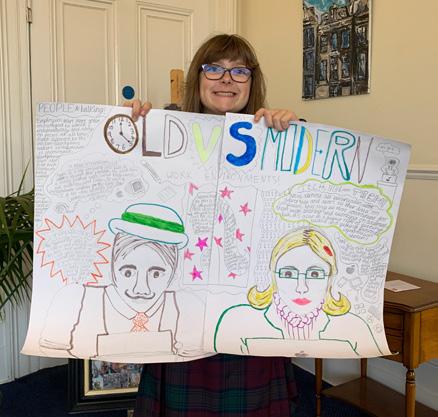
The push continued through the Summer Term, with a pilot cohort of around 35 Year 12 pupils going out on work experience at the end of June and in early July.

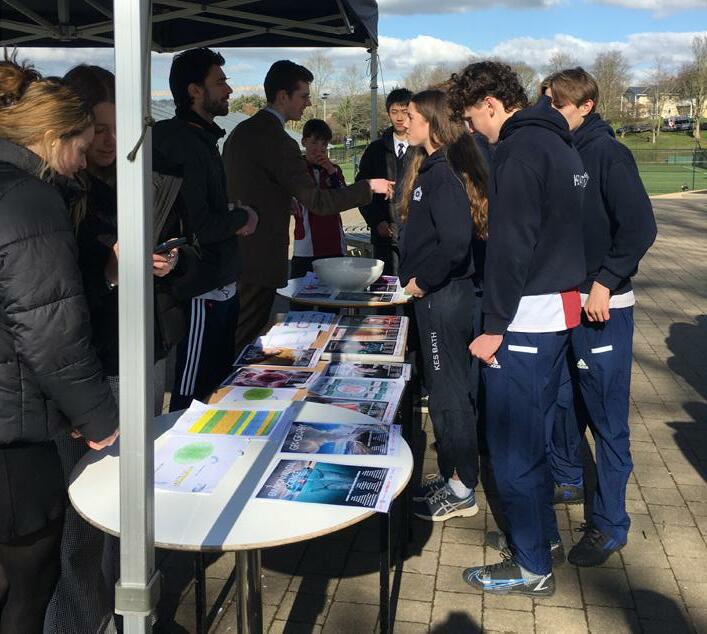
build on this support for the future, and if any OEs would like to get involved with careers advice by speaking to our pupils in person or virtually, providing one-off masterclass or workshop opportunities, and particularly by offering any work experience placements or by participating at careers events, we would love to hear from you via alumni@kesbath.com
Julia Rees-Roberts KES CAREERS EDUCATION CO-ORDINATOR Clockwise: KES Careers Convention; winning entry for the Careers poster competition; Careers gazeboLess prosaically, I was struck by how amazingly adaptable and resilient communities can be, even in the face of seemingly overwhelming obstacles.”





Potter 1996-2007 describes the challenges of conducting a choir during the pandemic and holding onto the positive lessons of the last two years.



For a fair proportion of the last two years, much of my job has involved sitting at a desk, pretending to conduct a choir that I cannot hear, and whose members cannot hear each other. If I’m somewhat baffled re-reading that sentence, I wonder what my 18-year-old self would have made of it.
I left King Edward’s in 2007 with no fixed idea of what my life would look like, except that I was fairly certain it would involve music. The muchloved Headmaster Crispin Rowe once introduced me at a concert as ‘exuding music from every pore’, which, while perhaps an unpleasant image, was nevertheless a pretty good description.

I went on to study Music as an undergraduate, encouraged especially by the late, inspirational David Bevan, who taught A Level Music in a fabulously idiosyncratic style, and did his best to prepare me to go up to the college and university at which he himself had studied.
After some enjoyable post-graduate years working as a professional singer, I settled into my current career, as a conductor. For me, this has meant working predominantly with choirs and vocal groups, from large choral societies, numbering over a hundred amateur singers, to small chamber choirs and professional consorts.

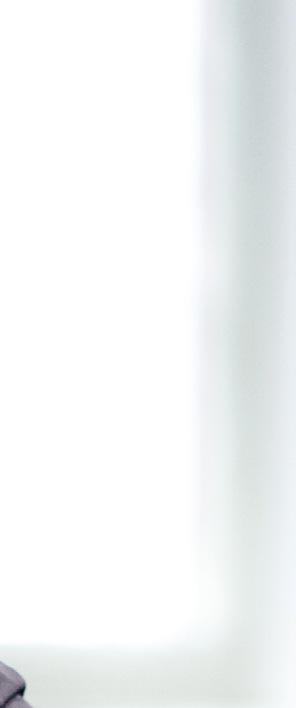
The pandemic surprised everyone, and there can be no one who has entirely escaped its effects. However, it was an especial shock to discover in March 2020 that singing – hitherto considered a healthy, artistically-satisfying and sociable pastime – was now topping lists of the most dangerous, Covid-spreading activities.
Initially, I imagined that being a choir director in this pandemic would be analogous to being a lifeguard in a desert – that is, utterly redundant. It wasn’t long, though, before I found myself in the situation I described at the beginning of this piece.

Delivering a vocal warmup to a camera and a sea of muted faces in little squares is perhaps the silliest it is possible to feel.
On Zoom, no one can hear you scream. At least, not if you’re on mute, which you have to be if you are one of a choir of 60-odd attempting an online rehearsal. Digital delay precludes any kind of coordinated musical activity. (Trust me – we tried it and it gives the word ‘cacophony’ new meaning.) Instead, one person can lead, for example by singing and playing a piano, whilst everyone else sings along on mute at home. Or they can pipe a recording through, which at least gives those singing the illusion of participation with others.

This ‘new normal’ prompted a few realisations. Firstly, that delivering a vocal warm-up to a camera and a sea of muted faces in little squares is perhaps the silliest it is possible to feel. (Joe Wicks deserves every inch of his MBE.) Less prosaically, I was struck by how amazingly adaptable and resilient communities can be, even in the face of seemingly overwhelming obstacles. In our case, our weekly meetings helped us to hold onto our identity as a group. In our break-out rooms we ‘socialised’ with one another, and in our main sessions we learned new repertoire together and kept our vocal muscles exercised. This meant that when we were finally able to perform, it didn’t take us too long to get back up to speed.
We were even able to produce a few performances, painstakingly assembling individual recordings into layered tapestries that, with a bit of production wizardry, turned into pretty convincing choral sounds. I found myself relishing the opportunity to re-learn audio-editing skills that had lain dormant since my school years.
Now that normality has begun to reassert itself, I’m trying to hold onto the lessons of the last two years. One is the importance of music as a glue which binds choirs like mine together in the pursuit of uplifting experiences, in communal worship at the altar of art. The other, appropriately for these pages, is to never stop learning and opening our minds to the possibility of new, different ways of doing things.


Kesia Lupo (née Sanders) 2003-2007 reflects on her pursuit of two creative careers working in books, and the variety of her work as she combines her editorial career with writing ‘young adult’ (YA) fiction.











Above: Reading Harry Potter and The Goblet of Fire in 2000.






On a grey January day in 2003, my new English teacher escorted me (aged 13) to my firstever class at King Edward’s School. I’d spent the last eight years in Germany – four years on a UK/US military base near Dusseldorf and four years at a mixed-language European School in Munich, where, to my embarrassment, I struggled to meet the German language requirements, which partly informed our relocation to the UK. I was nervous. School had been an ordeal for a long time. But, once I was settled, Mr Briggs introduced us to William Blake. And I loved every second of the lesson. I thought: “I might be OK here, after all.” School isn’t always kind to creative students who aren’t good all-rounders but, luckily, the UK system lends itself to specialisation and I had the support of a bunch of teachers I’ll always remember. I thrived in my Politics AS and Philosophy, History and English Literature A Level classes. I gained a place at the University of Oxford to read History, and loved it, but had no idea what to do next.
As students around me shifted towards sensible careers in law, consulting, finance or the civil service, I started to panic. None of these paths felt right for me. I’d continued my childhood hobby of writing stories and had recently completed my first novel. One of my closest friends, Natasha Pulley (now a bestselling author) suggested I could pursue a career in books.
Now, I work as Senior Editor at a small children’s and young adult (YA) publishing company, Chicken House, founded and run by the editor who discovered Harry Potter. I’ve worked on books which were top ten children’s bestsellers (Tin by Pådraig Kenny), books which have been acquired by major studios for TV/film adaptation (The Apprentice Witch series by James Nicol) and books that have won major awards ( Asha and the Spirit Bird by Jasbinder Bilan, which won the Costa). In addition, I’ve had two novels published by
Bloomsbury – a YA fantasy duology, We Are Blood and Thunder and We Are Bound by Stars. My third novel, a YA thriller, will be published in 2023.

When I tell people what I do for a living, I’ve found they understand my writing far better than my editorial career. Editing is commonly understood as correcting spelling and punctuation but, in fact, that detailed task is a very small part of editorial work. So what does an editor do?
Editors are ultimately responsible for deciding what books are published. We acquire books largely from literary agents but sometimes invite submissions directly from authors, for example, via our own Times/Chicken House Competition. Acquiring books involves pitching to the author/agent (sometimes against competition), negotiation and contract drafting. Once we’ve acquired a novel, the editor is responsible for preparing it to meet the public. I work with authors to improve every aspect of their novel –the plot, characters, setting, genre, pace and beyond. The work can be extremely involved.
Working in publishing has its downsides. Despite increased awareness of the issue, the pay remains poor. I didn’t reach the current average UK salary until around five years into my career, having started as an editorial assistant in London on £19k in 2013. This is rough, and has knock-on impacts on diversity within the industry. You also have to be comfortable knowing your peers in other industries will likely be earning many times your salary. Another downside is the many (unpaid) hours I spend outside work catching up on reading.
For me, the positives of working in a creative, fun and fulfilling career outweigh the negatives.
My writing career developed alongside my publishing one. After my BA, I gained a place on the Creative Writing MA at Bath Spa University. Afterwards, I
As students around me shifted towards sensible careers in law, consulting, finance or the civil service, I started to panic. None of these paths felt right for me.
started to seek a literary agent. The journey was slow and involved countless rejections. An early draft of We Are Blood and Thunder (the third novel I’d written) gained me my agent in 2014, one year into my first publishing job at Pan Macmillan in London, but it was three years, two rounds of submissions and a lot of rewriting later before the book was acquired by Bloomsbury.

Publishing and being published simultaneously has been extraordinary and each experience has enriched the other. Writing with a full-time job is challenging (there isn’t time for much else!) but I’m so lucky to be able to pursue two careers, both of which I enjoy. And, of course, I’m incredibly grateful to KES for setting me on this path.
Careers in books are so much more varied than this short article is able to convey. For anyone seeking more information, I’d recommend www. peopleofpublishing.com as a great starting place. For writers, The Writers’ & Artists’ Yearbook (there’s a children’s writing version too) is invaluable. And if anyone reading this is writing children’s fiction for ages 7+, including YA, please consider entering our Times/ Chicken House Competition: www. chickenhousebooks.com/submissions
I’m happy to answer questions. You can find me on Twitter @keslupo or on Instagram @kesialupoauthor
Publishing and being published simultaneously has been extraordinary and each experience has enriched the other.”








Mike Robinson 1967-1978 had an unconventional route to his role as CEO of Prior’s Court School, part of the UK’s third largest autism charity, but says it is, without a doubt, the best job he’s ever had. His work with the charity was recently recognised with the award of an OBE in the New Year Honours List for 2022.

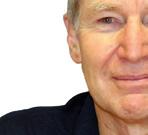



Imagine a school where there are five adult staff to every child, where the school site is also the young person’s home for 52 weeks of the year, and where it costs £250,000 a year for each young person to attend. This is the reality for about 100 of the 1,500 children in the UK who are affected by the most complex form of autism. This is Prior’s Court School, judged Outstanding by Ofsted in its last two inspections, and it is part of Prior’s Court Foundation, where I am the Chief Executive.



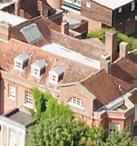



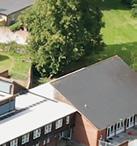
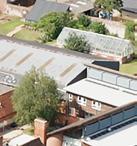


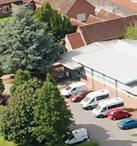




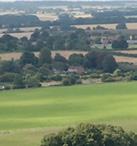
It is a world away from my experience of life at KES in the late ’60s and ’70s, starting at the Junior School in Broad Street with a traditional-style education provided by the likes of Mr Rhymes, who would never be without a silk handkerchief protruding from his jacket top pocket. Moving on to the Senior School, my life seemed to revolve around sport. Classroom work was not completely forgotten, and I still look back proudly on what I consider my greatest academic achievement – passing my Latin O Level. I don’t know who was more surprised, me or Doc Thorn, who I imagine considers this feat one of the greatest moments of his teaching career!


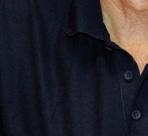


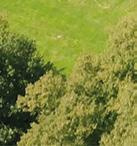


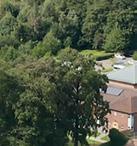


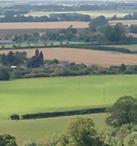
Prior’s Court, a highly specialist school providing education, care and therapy to just under 100 young people with complex autism, was set up 22 years ago in Berkshire, on the site of what used to be the prep school for Kingswood, before it moved to the senior school site in Bath. Its founder was Dame Stephanie Shirley CH, an extraordinary woman who escaped Nazi Germany on the Kindertransport and went on to build a ground-breaking IT company which employed only women. (Check out the full story, currently being made into a feature film, in her amazing autobiography, Let It Go.) She sold the company, became a philanthropist and proceeded to give away her fortune of over £65 million, primarily to projects in the world of autism. She opened Prior’s Court with the view to it being the school she would have liked for her son, who had complex autism. In his childhood, if you had these challenges your future was in a mental hospital. Schools of this type simply did not exist.
The young people at Prior’s Court are profoundly affected by the characteristics of autism (difficulties with social
interaction and communication and restricted and repetitive behaviour) in addition to having little or no verbal communication, severe learning difficulties and, on average, a further four diagnosed medical conditions, such as epilepsy or mental health issues. Life has not been kind to these young people.
The impact of complex autism does not end with the young people. Equally affected are the families. A young person with all these challenges often finds difficulty making sense of the world around them and can react with aggression and violence to themselves, others or their environment. In the best interests of their children, parents then have to make the unimaginable, heartwrenching admission they are unable to look after their children in their own home.
The role of Prior’s Court is to transform lives, preparing those young people to be healthy, happy, independent and having access to work when they leave. We are not about GCSEs or A Levels but teaching our young people the most fundamental skills of life. How to dress themselves, brush their teeth. Even being able to walk past an open window without having to close it could be a crucial skill they will need to help them live a happy life.
We are also about ambition for our young people. They might have more challenges but that does not mean we shouldn’t be ambitious for them.
We had the idea to train our young people to be bakers so we opened an on-site bakery called Bread & Beyond, providing training for them at the same time as supplying the local community. We have just had our first young person take up a work placement in a local commercial bakery.

Someone had the crazy idea to take a group of our children to Abbey Road studios in London to make a record. Profoundly autistic children in a very unfamiliar environment with lots of very expensive equipment – what could possibly go wrong! Our amazing staff made it happen and the culmination was an award-winning short documentary on the project that has had over two million views on YouTube.
My journey to CEO of Prior’s Court has been a bit unconventional. A degree in Botany, an international consumer products marketing career, working for a car parts company, then in children’s publishing. Opening international schools in China, running a group of special schools in the UK and finally arriving at Prior’s Court – without a doubt the best job I have ever had.
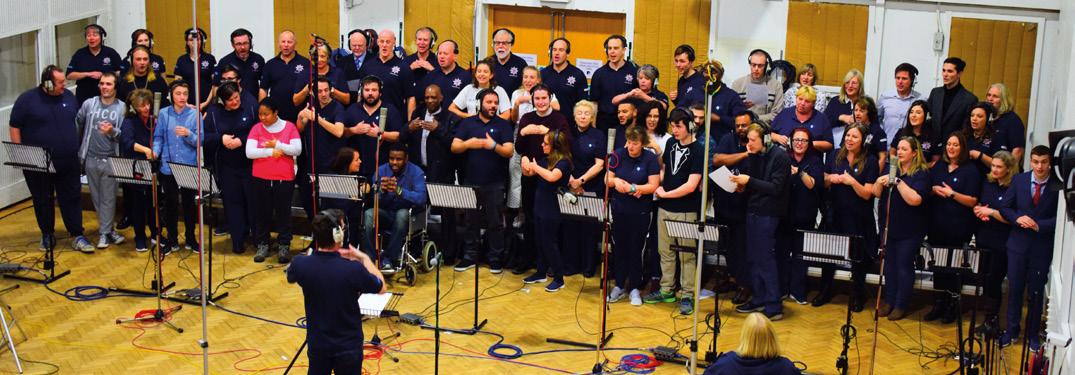 Clockwise: Bread & Beyond; recording music at Abbey Road; Prior’s Court School
Clockwise: Bread & Beyond; recording music at Abbey Road; Prior’s Court School
The role of Prior’s Court is to transform lives, preparing those young people to be healthy, happy, independent and having access to work when they leave.”



Architect Jack William Taylor 2002-2009 explains how his early enthusiasm to study architecture has set him on an exciting and creative career path.

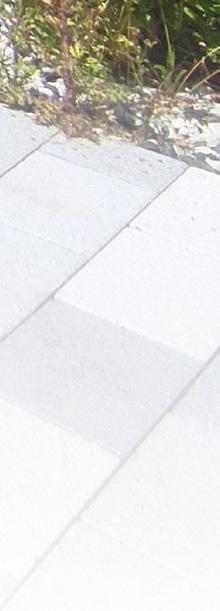
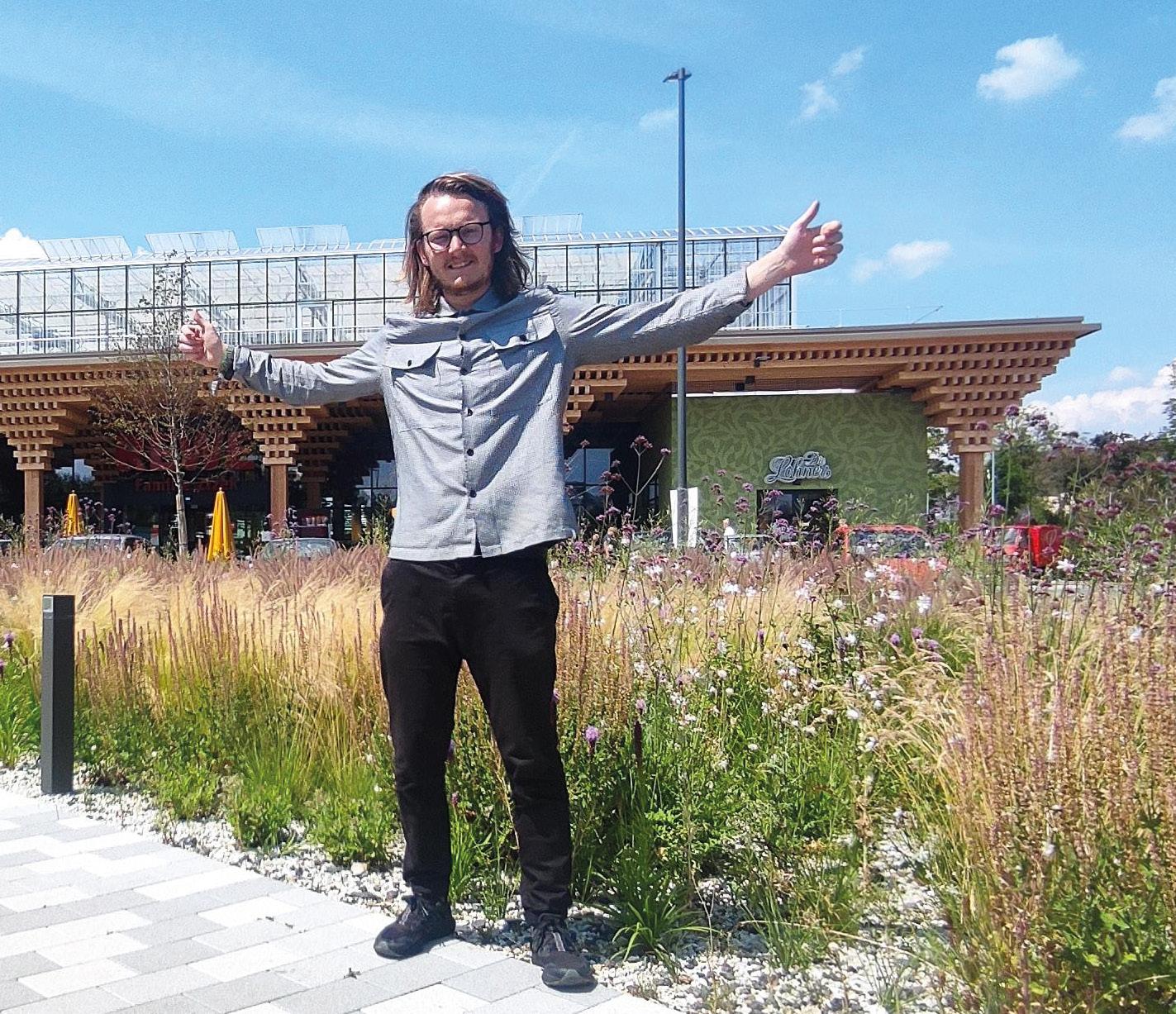
Future,













To anyone who remembers me during my time at KES, they would definitely recall my enthusiasm to study architecture and they will hopefully be pleased to hear that, over the past 13 years, I have vigorously immersed myself in this allencompassing vocation and profession. It was reflecting during the mental space of the Covid lockdowns that brought me to reconnect with Neil Purcell, my old form tutor and DT teacher, and inspired me to write this article.
My desire to become an architect began before starting at KES and this passion was encouraged and cultivated by the great teaching staff and facilities, allowing architectural exploration to form a large part of my academic work. The Art and DT block became a formative place for me to experiment creatively, developing the skills and belief in my ideas that still serve me to this day.
The path forward was less clear, but, through the guidance and support of Neil Purcell and others, I was encouraged to apply to the Mackintosh School of Architecture in Glasgow. The success of this advice is testament to the fact that great teachers have a hugely positive impact on a student’s direction in life and this set me on the exciting path on which I find myself today.
The first year at the ‘Mac’ focused on building a wide skill set through drafting and model making, with the second year concentrating more on the conceptual and creative approach to design. The third year led me to complete my strongest academic work, where I was rewarded with two national awards for my projects: a ‘writer’s retreat’ in the Scottish Lowlands and a vision for the ‘urban renaissance’ of the post-industrial town of Penicuik.
The great thing about architecture is the endless possibility to learn, experience and travel. As a profession, architecture is highly international and skills learnt in one country easily transfer to another, as well as enriching one’s understanding of the design sensibilities of new cultures and places.
This passion for travel first began at KES during Activities Weeks, departmental trips and on language exchanges, and continued in Glasgow. At the end of my second year, I travelled to Russia and Georgia with friends to immerse myself in the art and architecture of the
constructivists, sketchbook in hand as I had all those years before on wonderful school art trips to Barcelona, Venice and Florence.
Naturally this thirst for new experiences and culture led me to work abroad at the studio of Sauerbruch Hutton in Berlin, whose work, whether by fate or chance, I rediscovered years later, collaged into a KES Art sketchbook from years before. The time working in Berlin was spent mostly on the competition floor of the office, working on a wide variety of projects based all over Europe, from a wine centre in the Spanish countryside to office towers in Stockholm and a masterplan in Munich.
Once the year was out, and with a passion for exploration and adventure no doubt fostered by the thrill of those cadet force nights sleeping under tarp in the cold and mud of Salisbury Plain, I set off to complete my most arduous architectural research trip: two months trekking overland through Kazakhstan, Kyrgyzstan, Uzbekistan, Mongolia and China to explore the ‘Silk Steppes’ architecture.
Needless to say, a life in architecture is a marathon, not a sprint, and in my fourth year I first experienced issues with mental health. Inevitably, in a high-pressure creative career such as this, many struggle during their academic and professional life, therefore it is important for me to be open, to help others advocate for and support one another.
A challenging fourth year led to an exciting fifth and final year and a return to Berlin to spend time studying at the Universität der Künste. This allowed me to complete my thesis project, ‘Freiraum (Free Space) – An Urban Manifesto’, which investigated the relationship between the citizen and the state and their collective ‘right to the city’.
After graduating from the ‘Mac’, I arrived in London to work at the architecture studio ACME on a wide range of projects nationally and internationally, including designing the world’s first fully integrated supermarket and urban farm for the REWE Group in Wiesbaden, Germany as well as masterplanning the
The success of this advice is testament to the fact that great teachers have a hugely positive impact on a student’s direction in life and this set me on the exciting path on which I find myself today.”
future of Euston Station. I have continued to pursue travel to lesser known parts of the world to seek out architecture, most recently to Armenia and Georgia.
Now on the next step of my journey, I am the Associate Director of a newly formed practice based in London called ‘A IS FOR ’, where we are enjoying our own agency. We have been given the great opportunity to work with Sir Roger De Haan and his team on the regeneration of the harbour and seafront in Folkestone, bringing forward his vision for the renaissance of the town through great contemporary architecture. This has allowed me to bring together all these experiences, with the passion and energy first fostered and nurtured at KES, to champion for the best possible design in the work we do. I can’t wait to see what lies ahead, however, I’m sure it’s going to be quite a journey.
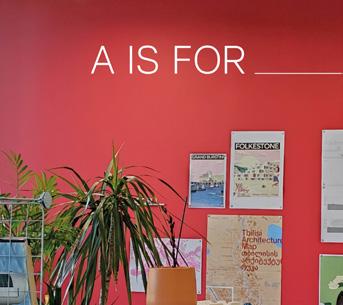
For more information, visit www.aisfor.co or follow @aisfor.co



As Sam observes in his Chairman’s letter, it was a true delight to be able to welcome Old Edwardians back to school for official reunion events for the first time in three years, with over 200 former pupils and staff spanning seven decades returning over three Saturdays this summer to enjoy lunch, talks, tours and, of course, each other’s company. To see such joyous camaraderie, to feel the buzz of friendships rekindled and to be part of such a vibrant and happy environment was to be reminded of the strength of the King Edward’s community and of the bonds that connect us, past, present and future. Thank you to everyone who attended, and I hope that many more of you will be keen to come to one or more of the reunion events organised for the coming year; I certainly look forward to seeing you there.
Reading Dudley’s endearing reflections on some of the fantastic trips he enjoyed as a KES pupil was also a reminder of some of the opportunities which, sadly, pupils in schools around the world have had to forgo in recent times. However, we were delighted that a full programme of Activities Week trips, visits and events was able to take place in July, albeit –erring on the side of caution – all UK based. Although all of these cost more than £9, I am sure that they were equally filled with wonderful experiences generating long-lasting memories, even if no ‘thunderflashes’ were involved! This coming year will see the return of overseas trips to Europe and beyond, and we are delighted that a great KES tradition of horizon-broadening travel, discovery and adventure will once more be a part of that wonderful range of extra-curricular and co-curricular opportunities on offer to our pupils.
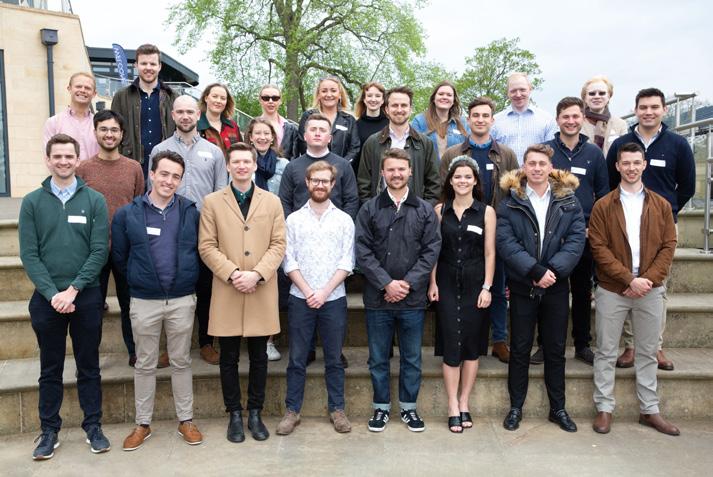 Above: 2011 leavers at the Anniversary Reunion in April; OE Dr Adam Kucharski
Above: 2011 leavers at the Anniversary Reunion in April; OE Dr Adam Kucharski
To see such joyous camaraderie, to feel the buzz of friendships rekindled and to be part of such a vibrant and happy environment was to be reminded of the strength of the King Edward’s community and of the bonds that connect us, past, present and future.”
A number of these opportunities –whether through named travel funds, general and specific bursary support or the annual OE Activity Award – are enabled by our OE community, and I am very grateful for the generous and thoughtful support provided to help pupils of the current and future generations to enjoy the kind of life-changing experiences that Dudley recalls with such warmth in his President’s welcome . Beyond that, OEs have helped enormously over the past 12 months in what has been a transformative year for Careers Education at King Edward’s, led with great energy, determination and creativity by my colleague, Julia Rees-Roberts. I echo Sam’s thanks for this invaluable support from our alumni and look forward to what is already a very impressive programme going from strength to strength, with your ongoing help, in the coming years.
We were also delighted in the past year to welcome a number of distinguished OEs back to North Road to give talks and presentations of a more broadly academic nature, including the very well received Wroughton Lecture by Dr Adam Kucharski in March on “The Rules of Contagion”, obviously a very pertinent topic in a pandemic age! And although Covid remained a challenging presence throughout the year, not least in an autumn term that defaulted frequently to an environment of ‘blended learning’, the engagement and progress made by KES pupils in and out of the classroom were both remarkable and uplifting. Whether through the many musical concerts, stage productions, exhibitions, creative and sporting endeavours, outdoor activities, trips, clubs and societies or competitions, our pupils and staff embraced the ‘work hard, play hard’ mantra that we have always so keenly espoused and made their mark in a wide range of fields.
We were certainly delighted with the recent public examination results and university and Higher Education successes, with record outcomes at every level and large numbers of very happy pupils able to progress to the next stage of their education with confidence and ambition, just as generations of OEs before them have done. To be ranked amongst the top 25 independent schools in the country (by The Telegraph, for GCSEs) is an accolade to be quietly proud of, even though other, less measurable strands of our pupils’ educational experience are equally important, if not more so.
I do hope to see as many of you as possible in the coming year and always look forward to news of how OEs are faring in their lives beyond KES. As ever, the contributions to this wonderful magazine by our alumni reflect a wide and varied range of professional and personal journeys that are both fascinating and inspiring. Many thanks for sharing these stories with us, as well as to Claire Davies for so expertly weaving these together for this year’s OElink. I do hope that you enjoy reading it and send my best wishes to you all, wherever you may be.
Whether through the many musical concerts, stage productions, exhibitions, creative and sporting endeavours, outdoor activities, trips, clubs and societies or competitions, our pupils and staff embraced the ‘work hard, play hard’ mantra that we have always so keenly espoused and made their mark in a wide range of fields.
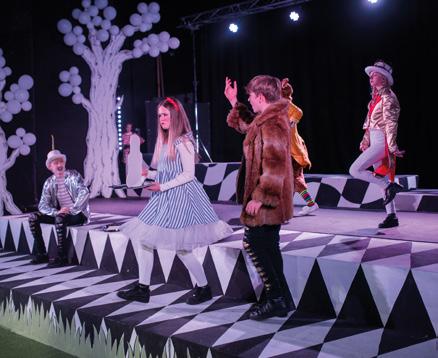



 Clockwise: 1st team Boys’ Hockey v BGS; Gold DofE; Scene from Alice in Wonderland; U14 Girls’ Cricket v Kingswood; Artwork by Chris Donovan (2022 leaver)
Clockwise: 1st team Boys’ Hockey v BGS; Gold DofE; Scene from Alice in Wonderland; U14 Girls’ Cricket v Kingswood; Artwork by Chris Donovan (2022 leaver)





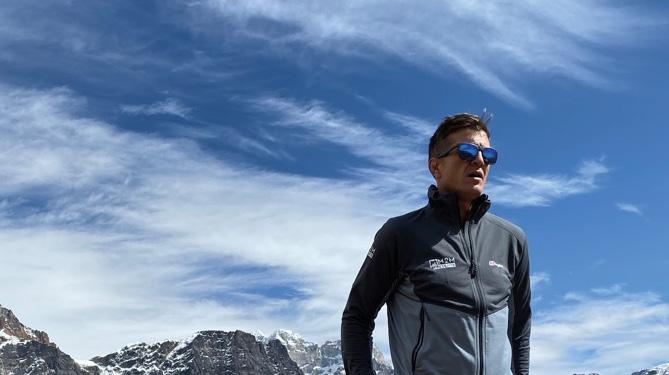
In 2017, Ed Jackson 1996-2002 had an almost fatal accident which left him with devastating and life-changing spinal cord injuries. His determined recovery route since then has been nothing less than remarkable. Last year he visited KES to speak at Prizegiving. His story of embracing and overcoming adversity was utterly compelling, and his words of advice for the next generation of KES pupils completely inspiring. Following this, he kindly met up with sixth form pupil Charlie McGuire to talk more about his experiences, and Charlie writes about their conversation here.


Having fractured both his C6 and C7 vertebrae, shattered a disc and partially crushed his spinal cord following a diving accident
in 2017, former professional rugby player Ed Jackson has since achieved a wealth of feats that, he admits, “I never would have considered doing when I was able-bodied”. Whether it’s through his presenting for Channel 4, his tireless work on his charity, Millimetres 2 Mountains, mentoring others or sharing his story as a published author and keynote speaker, Ed hasn’t squandered a moment of the past four years. However, he never glosses over the hardships that the initial stages of his journey presented him with and it is in the opening chapters of his recently published book, Lucky, that he portrays the events preceding and following the accident with visceral realism.
“I can remember the day very vividly,” Ed says, sitting across from me with a glass of sparkling water. “I can remember diving into the pool very vividly. Some things are stuck in your memory.” Ed is deeply aware of the dark irony of what happened, in that he was actually recovering from an injury sustained playing for Welsh rugby club Dragons on that fateful April Saturday in 2017. “As a rugby player, my identity was in my physicality and that was the one thing that had been completely taken away. So, coming to terms with that over time was really difficult.”
Reflecting on his initial night at Bristol’s Southmead Hospital, he recalls: “It wasn’t until I woke up in intensive care and I had my first night alone, awake, thinking about it, trying to move things and my body not reacting, that it truly sunk in.” As he tells me about his time spent in intensive care, it becomes clear that internal burdens began to plague him each night. “During the day I’d distract myself by chatting to my friends, putting a show on for my family, being positive, but when they all go at night and you’re left by yourself with your thoughts, that’s the hardest time. All I wanted to do was fall asleep because all I wanted to do was wake up and have my family there again.”
However, as with many aspects of Ed’s story, he overcame this adversity and this resulted in him unearthing a life-changing new outlet. “It was me just getting thoughts out of my head so that I could
get to sleep,” he says of the voice notes that eventually formed the basis of his best-selling autobiography. “When I woke up one afternoon and my friend was going through all my voice transcribed notes on my iPad, I was a bit shocked and, to be honest, a bit annoyed with him, but they managed to persuade me to make them public over time.” Sharing his experience and raw emotions, even in the form of a blog, was initially a taboo concept to Ed.
“I think the demographic of being a young guy, especially someone who has been brought up in a sport like rugby, you are taught to show no weakness ever; if you’re injured, don’t let the opposition know it. The danger with that is it goes over into the mental side of things. People who are struggling aren’t willing to admit it and it’s why there’s a big issue with mental health in young men, and men in general, and I was certainly in that bracket.”
Nevertheless, once Ed did begin to share his story, he reminisces that, “After a while I was getting these messages from people saying how much my journey was helping them, but also from people who had been through it before and were giving me advice. I had this peer support and it became a group that I could be completely honest with. Showing vulnerability became the biggest strength I had.”
“I think laughter is such a powerful tool,” he later adds, furthering the arsenal with which he combats hardships. “I think you can really steal the seriousness of a situation away, just by laughing at it, no matter how bad it is.” Speaking of how his friends and family supported him, he
Whether it’s through his presenting for Channel 4, his tireless work on his charity, Millimetres 2 Mountains, mentoring others or sharing his story as a published author and keynote speaker, Ed hasn’t squandered a moment of the past four years.

continues with a telling smile, “Half of my mates were acting like Robin Williams, to be fair, which was actually really useful. One of my friends chucked three juggling balls on my chest which, because it was day two, was quite a rash thing to do, but it was the first time I felt normal after the accident. Once you get out and about on the spinal ward, you start to meet those other characters and we started setting lap times around the garden and everything.”
“I remember saying to myself,” he recounts, “If enough good can come from this situation for other people, then it’s no longer a bad situation. By definition.” This is the attitude that has seen the success of Millimetres 2 Mountains in helping its beneficiaries overcome personal issues regarding both their mental and physical health, with Ed sharing his passion for adventure as a means of
Far left: Mera Peak, Nepal Above: ‘Neverest’rehabilitation. But, when Ed himself was at the start of his journey, who did he look to for inspiration and the motivation to persevere? “You’re often asked, especially when I was a rugby player, ‘Who’s your hero?’ and they want you to say Jonny Wilkinson or someone like that,” he confides with a laugh. For Ed, however, his inspirations have always been a lot more personal. Having lost his close friend Tom Maynard in 2012, Ed cites the loss as a deeply formative moment. “Losing him felt immediately way harder than waking up with a spinal cord injury, which is testament to how much he meant to me. It also showed me that I could get through it, not get over it, but get through it.” Ed dealt with both blows in a similar way as, even before his accident, he displayed his adventuring and fundraising tendencies in 2012 by planning a 100-mile trek through the Borneo rainforest to raise money for the Tom Maynard Trust. He proceeds to mention former Paralympic rower David Smith and ex-England Under-21 prop Matt Hampson, who has the highest level of spinal cord injury. “He’s created this amazing charity and lives this unbelievable life,” he says of the latter. “I go to dinners with him and he’s getting his mates to sneak him gin and tonics when his carers aren’t looking. He is just living this life of getting on with it. I remember thinking, “I’m already in a better situation

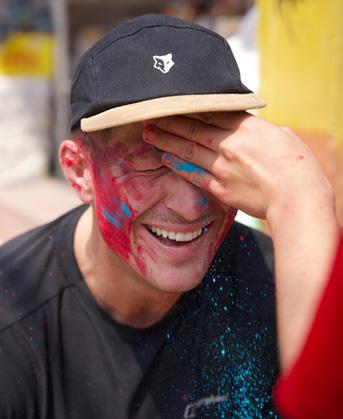
“In a way I had a clean slate,” he ponders. “I was never going to play rugby again, I knew that for a start, but that was all I really knew and that’s all I thought I was capable of.” Yet, even when stripped of what had been his livelihood and central passion for many years, Ed still counts himself fortunate in having been able to discover new outlets for himself. “I’m a big believer that purpose is built and not found. People wait to find something that gives them purpose and they’re really lucky if they do that at a young age. Then you’ve got people who get ten years down the line and think, ‘You know what, I’ll do something else’, and it’s a lot harder to make that decision if nothing’s technically going wrong, but they’re the ones who will end up glad of that career change when they’re older. I was at that ten-year stage and I was terrified of what the future held but then I got forced back to square one, so I feel really fortunate.” As he began to branch out into new avenues, reaffirmation of Ed’s forays into writing came from an unexpected source. “I had a really funny letter from my old English teacher, actually. I always enjoyed English, but they stupidly gave me a professional rugby contract at 16 so my papers for sixth form went out the window,” he quips ironically. “But he wrote me this
I remember saying to myself, if enough good can come from this situation for other people, then it’s no longer a bad situation.
definition.”
lovely letter. Mostly it was about the blogs I was writing and then he puts right at the end, ‘PS: I never knew you were listening’, which I found really funny.”
After all Ed has achieved and contributed to, in so many fields, over the past four years, personally I would find it hard to pick out a crowning achievement. Apparently, there is no such issue for him. “If I could only pick one thing, it would be the charity. A hundred percent. If there’s one thing that I would want to leave this earth with, it would be the fact that the charity is now something that is running irrespective of us.” It is clear from his unwavering, steadfast reply that establishing Millimetres 2 Mountains, and working with other charities such as Restart Rugby is what he truly relishes. He expands: “The mentoring I do with spinal injury patients, the charity and actually probably a lot of the unseen stuff is what I get real purpose from.”
Ed’s most recent charitable endeavour, the ‘12 Peaks of Christmas’, saw him and a good friend climb 12 of the highest mountains in the UK over the course of six days. Of course, the adventure wouldn’t

have been complete without the pair carrying a Christmas tree up each peak with them. “It’s going to be brutal,” he conceded, discussing the journey many weeks before embarking on it, “but we’ll make it fun and it’s a good fundraiser for Millimetres 2 Mountains.” Despite having climbed the height of Everest itself over lockdown on his parents’ staircase, which he describes as “the most tedious thing ever”, and aiming to climb a 7,000-metre mountain in March, Ed doesn’t necessarily have his sights set on the world’s most renowned summit. “Everyone wants the achievement of Everest, but I’m not really bothered by that anymore. Mountains mean more to me than that. They’ve been such a healing part of my life and they’ve become something that I like to share with people, to heal them as well. I would like to climb an 8,000-metre mountain, but probably somewhere that doesn’t reap the rewards of tourism as much, and go and support that way.”
When I dare to ask what he thinks the future holds for his old team, Bath Rugby, who are currently win-less in ten consecutive matches, Ed initially responds with a lightly sardonic chuckle. “As a Bath boy through and through, it’s a shame to see what’s going on in general. But it’s Bath, right? They’ll come back around eventually. Let’s just hope you’re not too
old by then, because I’ll be even older.”
In the days that followed my conversation with Ed, I was approached by a number of members of staff who had either been peers of his from his time at KES or knew him in some capacity through the School. To whatever extent they knew him, they all wanted to know how he was and what his next fundraising scheme was set to be. After speaking to all of them, it became clear that Ed’s passion for whatever he is turning his hand to at a given moment is something that has a lasting effect on those he meets. I urge anyone who shares even a shred of this enthusiasm to contribute to Ed’s upcoming ascent of Nepal’s Himlung Himal*, or any of what will surely be many more adventures to come.
*Since this interview was first published in January 2022, Ed has returned from his ascent of Himlung Himal. To find out more about the charity and how to get involved with their upcoming trips and challenges, please visit Home : M2M Foundation (www. millimetres2mountains.org)
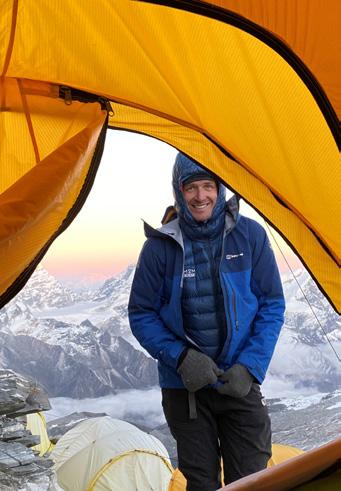

 Clockwise: Climbing the Allalinhorn, Switzerland with Leo Houlding; Mera Peak, Nepal; Gran Paradiso, Italy; the charity logo; ‘12 Peaks of Christmas’.
Clockwise: Climbing the Allalinhorn, Switzerland with Leo Houlding; Mera Peak, Nepal; Gran Paradiso, Italy; the charity logo; ‘12 Peaks of Christmas’.
Charlie McGuire
I’m a big believer that purpose is built and not found.
Last autumn saw the publication of Therapy is … magic by Jo Love 2000-2002 . In her debut book, Jo shines a light on the emotional and physical benefits of talking therapies, from the rarely heard client perspective. Here she shares further insights into her experience of therapy and why it can feel like magic.

















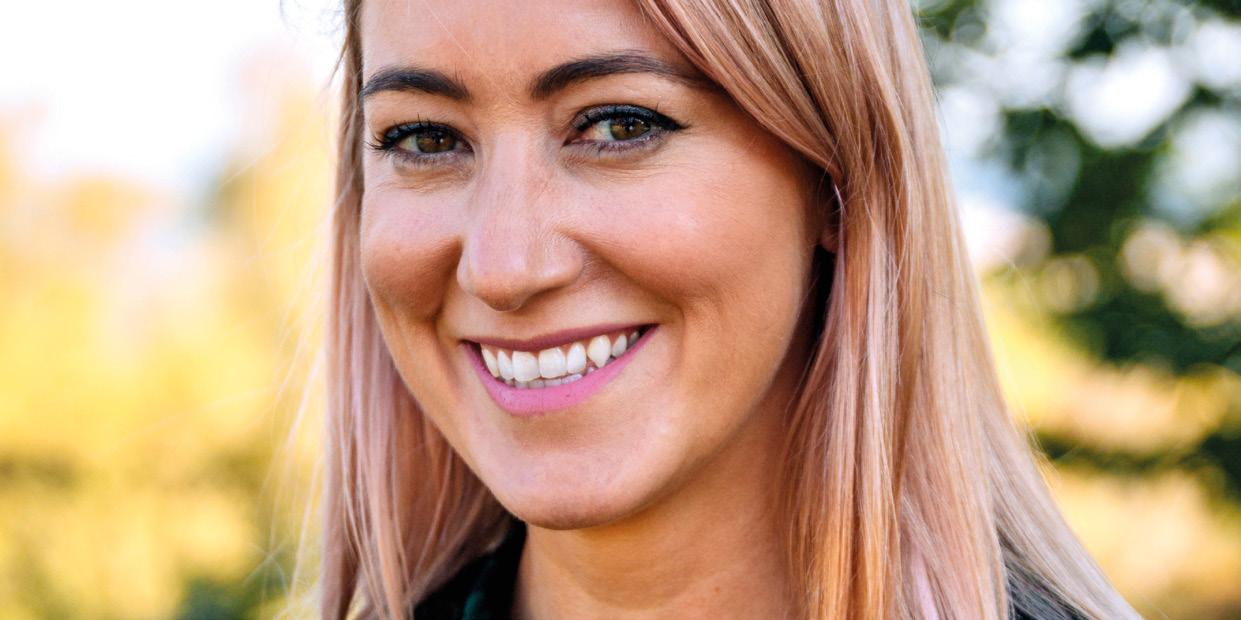
In recent years therapy has become a lifeline for me.
Therapy has changed and shaped my life in ways I could never have anticipated.
Most recently it inspired me to shift careers and start my training as a psychotherapist here in Bath. It also motivated me to write a book, Therapy is … magic , to share my own experiences of therapy and lift a veil on a sadly still stigmatised and secret world. Despite it being 20 years ago now, it’s clear how my time at KES, and certainly my A Level subjects and teachers, helped the book-writing process many years later (perhaps even more than my previous career in law did!). As I wrote, I could hear my English teacher Mrs Fletcher’s voice as I grappled with split infinitives and Oxford commas. I’m certain my History teacher, Mr Burroughs instilled in me the necessary curiosity to be able to critically examine how my past experiences might help others. And finally, the unwavering support my Art teacher, Mr Pell gave me allowed me to continue to be creative into adulthood and even have the confidence to include my artwork in the book itself!
This isn’t to say that the therapy itself has always been plain sailing. In fact, it has been anything but. I’ve seen several therapists over the years and it’s always been a unique and complex relationship. Some therapists have been great, some less so; sometimes I’ve been open to the help and support, other times I haven’t. And I’ll admit it wasn’t until relatively recently that I felt the real ‘magical’ effects of therapy.
I definitely do not claim to understand how the magic of therapy works; all I know is something incredible happens when you open up to another human being who you click with, and who is trained to listen and support. As far as I am aware, NO ACTUAL MAGIC is involved in therapy,
even though at times I have been utterly convinced that some kind of sorcery was at play in my therapist’s office. I’m frequently amazed how much better I feel when my emotions and intellect are aligned, and how that alignment naturally occurs through the on-going process of therapy.
I think one of the things that has made the relationship with two recent therapists so positive is that they have both consistently shown me over time that they have got my back and that my wellness is their priority. They have been on Team Jo. They have acted as compassionate and thoughtful mirrors that I can look into without judgment or fear. And that’s not to say they have always let me off lightly; they’ve been able to gently hold me accountable, allowing me to notice and course-correct when I’m repeating behaviours that have proved harmful or unproductive in the past. Having weekly sessions has meant they have been able to gently excavate my whole life history and can remind me of patterns even when I’m not seeing them myself. Sometimes it almost feels like the relationship itself is the healing ointment rather than the words said.
I feel compelled not to understate how hard therapy can be. It’s hard to summon the courage to go to therapy; it’s hard to find the right person to make you feel safe, emotionally held and comfortable. It’s hard to trust the process when progress is slow, it’s hard when you doubt yourself and it’s hard when you come away feeling worse than when you went in. It’s hard to sit in a small room with a relative stranger and tell them all your raw, uncensored stories. The ones you’ve never said aloud before, the ones you’ve never told anyone, maybe not even yourself. The imbalance of emotional exposure is hard to grapple with; they know almost all the worst bits about you, but you know next to nothing about them. Even when therapy is going great, you have a therapist you click with and you’re making great progress, it’s still really hard work. Joining the dots, noticing the patterns can be as exhausting as it is freeing. Taking the work from the cosy, safe vacuum of the therapist’s office into the harsh light of your real life can be confronting and difficult. Worth it, every second is worth it, of course, but boy it’s still hard.
Sadly, there is no magic incantation to chant, no magic potion to drink that will fix all our problems. But sometimes, I can’t help think therapy really does feel like magic.
Therapy is … magic

An essential guide to the ups, downs and life-changing experiences of talking therapy.
As well as covering mental health and how to access support, Jo writes about motherhood, corporate life, burnout, boundaries, saying no, perfectionism, grief and much more.
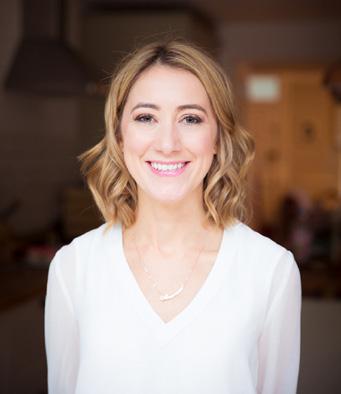 Published by Yellow Kite Books
Published by Yellow Kite Books
It’s hard to summon the courage to go to therapy; it’s hard to find the right person to make you feel safe, emotionally held and comfortable.
In recent years therapy has become a lifeline for me. Therapy has changed and shaped my life in ways I could never have anticipated.”
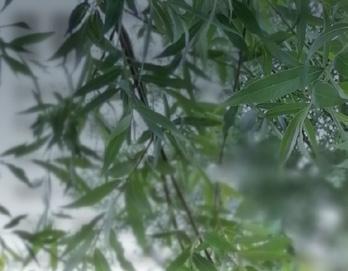












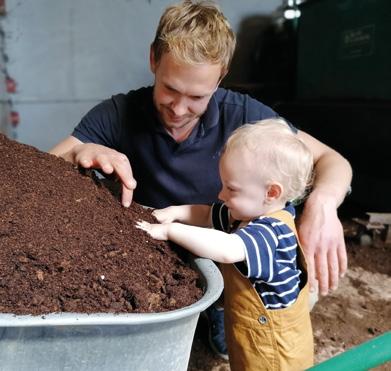





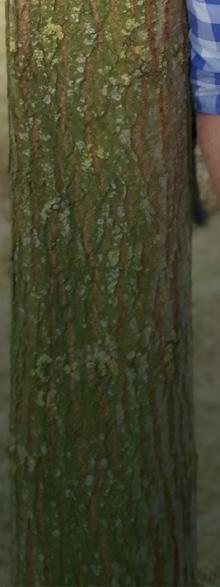






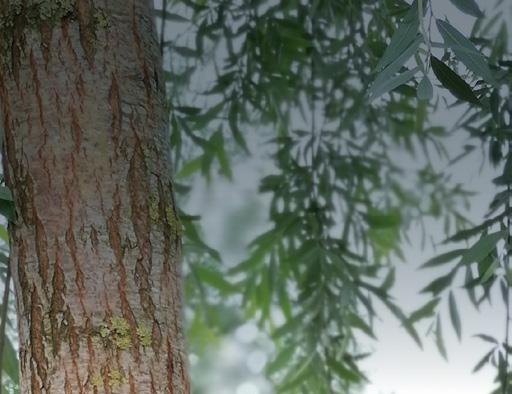

remain very passionate about farming
to ensure that what we do is not just for our generation.”
Growing up in rural Wiltshire with a love for the outdoors has meant that the agricultural industry has interested me from a young age. Not being afraid of hard work and being keen to challenge myself, I have always wanted to run my own business.
Besides enjoying the academic challenges that KES offered, the extracurricular activities were a big part of my life there, particularly the sports opportunities including cricket and badminton. I also loved the music, being a keen trumpet player. Looking back, my time at KES encouraged me to challenge myself in many areas, develop multiple skills and gave me the credentials to be self-employed in the ever-changing agricultural industry. Following taking my GCSEs and A Levels at KES, I decided to head to Harper Adams University for four years, where I did a degree in Agriculture.
After graduating in 2016 I joined the family business at Southview Farm near Box. Together with my wife Susie (and now with a little help from my son Harry), my focus has been to expand the existing business, adding to the farm’s pedigree herd of Sussex cattle, Christmas tree plantations and plant nursery by setting up an enterprise of free-range laying hens. Our initial flock of just 250 birds has now grown to over 4,000 birds, with the emphasis on sustainable production methods, and a short supply chain to deliver eggs that are ‘fresh from the nest box’. All our eggs are laid, collected, graded and packaged on-farm before being delivered directly to our customers, giving us complete control over every aspect of the supply chain to ensure a consistently high-quality product.

I remain very passionate about farming sustainably to ensure that what we do is not just for our generation. We have invested in solar panels on our barn roof, which means we can run our chicken houses and packaging station, where we grade and pack all the eggs, on renewable energy. Our electric van, which is predominantly charged up using electricity produced by the solar panels, is used for all our egg deliveries and is an invaluable addition to our vehicle fleet. Battery storage of the surplus energy we produce could be the next step in getting closer to our aim of being self-sufficient in electricity production at all times. Our cattle are reared and finished on grass/
forage and slaughtered and butchered within seven miles of the farm, to ensure optimal animal welfare and reduced carbon footprint. We also spread our poultry manure on our pastures for the cattle, which replaces the use of artificial fertiliser.
The poultry enterprise is run as an agro forestry production system. We have planted a cricket bat willow tree plantation across all our poultry pastures, which has multiple benefits for the environment and the birds. Chickens are woodland birds originating from Asia and so the trees greatly encourage them to leave the safety of the poultry shed and roam, by offering protection from birds of prey and other objects that startle them. Pools of birds are often seen in the shade of the trees in the heat of the midday sun. The combination of providing fresh pasture and a woodland habitat to range in results in a high-quality egg laid by a bird that is able to forage in its natural environment. Besides benefiting the birds, the willow trees also take up and utilise the surplus nitrogen in the poultry manure that the birds leave behind when ranging outside, preventing the waste of valuable nutrients and the risk of excess nitrogen leaching into waterways. Over a 15- to 20-year cycle, the willow trees will be harvested for cricket bats and a new tree planted in the place of every tree removed.
The days here at Southview Farm are full of challenges, with a huge diversity of tasks including machinery operating, evaluating the energy requirements of our flocks and working with the vets and laboratories to maintain high bird health and regular salmonella testing under the national control programme. We run a packing site here too and so there is never a dull moment when overseeing the
Looking back, my time at KES encouraged me to challenge myself in many areas, develop multiple skills and gave me the credentials to be selfemployed in the ever-changing agricultural industry.
quality control of all grading and packing operations and arranging the logistics of delivering over 2,000 dozen eggs per week. Fortunately, I was always interested in business management as, besides the physical running of the farm, there are the inevitable hours of office work to be done. This includes record keeping, monitoring stock levels, purchasing commodities used on the farm and the constant need to keep the financial accounts up to date in order to monitor gross margins and battle volatile input costs. Besides retailing our eggs at the farm, we deliver to a range of farm shops, cafes and hotels on a regular basis. With many businesses (including the kitchen at KES) relying on us, a key part of every week is regular communication with shop managers and chefs to ensure product quantities are delivered on time.
Living on site with my family and running Southview Farm has become more a way of life than a job, one that challenges me on a daily basis – as did my time at KES, which ended ten years ago but stood me in good stead to rise to a fresh challenge every day!
For more information about Southview Farm, visit www.southviewenterprise.com
One of the big themes in our mental health trust is coproduction, where we plan everything we do with patients, rather than for them.”























Tim Dixon 1999-2005 is Deputy Head of Chaplaincy for Tees Esk and Wear Valleys NHS Foundation Trust. He is also just finishing a Doctorate in Theology and Ministry at Durham University, looking at the pastoral care of remand prisoners and the role of the prison chaplain. He reports on his varied work at Roseberry Park Hospital in Middlesbrough, and how spirituality can be a force for good in assisting with people’s recovery and wellbeing.

The last time I wrote an article for the OElink, I was just starting what I thought would be a lifelong vocation in prison chaplaincy.
Back in 2014 I was working at HMP Wealstun as a chaplain, and in the following years ended up as Chaplain full-time in a busy remand prison, HMP Durham, which was a hugely formative experience. I was able to spend time with a large cross-section of society, all of whom were in crisis and at their lowest ebb, to offer them pastoral and spiritual support. Most people wanted a listening ear or someone to take their concerns seriously, or practical support with getting used to prison life. One recurring issue was mental health – people sharing their mental health challenges and the stigma they often felt around them, lack of access to diagnosis or appropriate treatment and support. A common theme was also how their mental health was affecting their spirituality; not only how mental health challenges can make faith and belief difficult but also how spirituality of many kinds can be a huge benefit to mental wellbeing, encouraging people to find hope and security in the midst of difficult times.
This interest in imprisonment and mental health led me to a new role in February 2021 as Deputy Head of Chaplaincy at Tees Esk and Wear Valleys NHS Foundation Trust, which is a northern mental health trust covering a patch roughly the size of the Netherlands! I’m based at Roseberry Park Hospital, which has a specific remit in Secure Inpatient Services, primarily caring for patients with mental health or learning disabilities who have been given a hospital order instead of a prison sentence. My role is to provide pastoral and spiritual care to a complex group of patients, along with supporting the staff who care for them, as well as patients’ families and carers. I also help manage a multi-faith team of chaplains from all walks of life, all believing different things but working together for the flourishing and wellbeing of our patients.
Much of what goes on in secure inpatient hospitals remains unseen to the general public, but what has struck me the most has been the excellent quality of life

people can have with the right treatment, support and a therapeutic environment.
Even in my short time here I have seen amazing changes in people’s presentation and understanding of their illness, as well as being challenged on my own preconceptions of how different kinds of mental health challenges can affect people. My work is incredibly varied and no two days are alike. One moment I can be engaged in a time of Bible study and prayer with a patient who believes they are the Messiah, the next I can be running a workshop on spirituality and recovery. I could be supporting a staff member who is struggling with their work or home life, helping a patient engage in mindfulness or meditation, or sitting alongside someone who is contemplating ending their life.
It’s a great privilege to be allowed to work alongside some of society’s most vulnerable people, helping them think through the big questions of life and some of the major challenges they face. Many people I meet have been in hospital for years or even decades, and it can be very difficult to find hope in circumstances where someone may never be fully ‘well’. Working here has helped me to think more in terms of being ‘in recovery’, which suggests a lifelong journey with highs and lows, rather than being ‘cured’. One of the big themes in our mental health trust is co-production, where we plan everything we do with patients, rather than for them.
An example of this came recently when a patient approached me to share how upset he was about the war in Ukraine and how powerless he felt to change the situation. We spoke together about
what we might be able to do and at his suggestion we planned together with other departments and patients to have a fundraising day for Ukraine. Patients rose to the challenge by baking cakes, donating items for a tombola and printing T-shirts. I was even able to show a video from some chaplaincy colleagues in Kyiv, thanking the patients for their support. This event crystallised the importance in mental health of giving people choices and empowering them to make their own decisions, a lesson I’ll be carrying with me into the future.
Mental health chaplaincy in the NHS is hugely varied and it’s great to work for an organisation where all faiths and beliefs, religious and non-religious, are respected, valued and celebrated, and to see how spirituality in all its forms can be a force for good in people’s recovery and wellbeing.
Even in my short time here I have seen amazing changes in people’s presentation and understanding of their illness, as well as being challenged on my own preconceptions of how different kinds of mental health challenges can affect people.
Roseberry


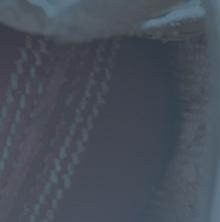







Last year Ian Pike 1979-1986 set out to track down
friends of his late brother Tony 1979-1980. He reveals the surprising connections he discovered, and how he is now teaming up with 1980 leaver Adrian Bird to bring OEs together to play a memorial cricket match in Tony’s memory in 2023.
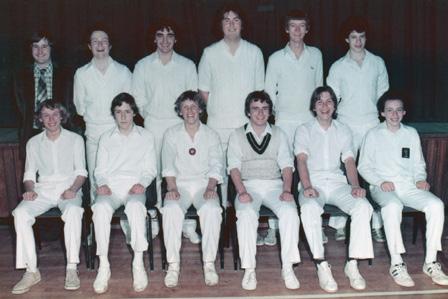

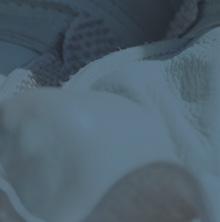

During my time as a pupil at KES, my older brother Anthony (Tony) Pike was tragically killed in a car crash when he was just 19. He had himself been a pupil at the School, after we moved to Bath from South Africa, and it is safe to say that he excelled at King Edward’s. He was a prefect, played rugby, cricket and hockey and achieved As in all his subjects (even after doing both his O and his A Levels in just one year), before gaining a place to study Law at Exeter University. His death in 1982 occurred whilst he was a student and the impact was felt greatly by all.
Fast forward to last year when, following the deaths of our parents, I found myself the last surviving member of the family I was born into; I decided to try and track down some old friends of Tony’s. I had found photos and an address book while clearing out my parents’ house, so I began looking for any familiar names from school, university and two Camp America camps he had spent summers with.
We had overlapped at King Edward’s briefly in my first year at the Senior School while he had been in the Upper Sixth, so there were several familiar names in the address book. I picked one of the first at random. Some quick online research found an ‘Adrian Bird’ existed on social media, and I could see that he was linked to some of the other recognisable names, so I was certain it was the same good friend of my late brother. I could also see that he was connected to another friend of mine who lived locally. I contacted this pal with the story of my task and was stunned to discover a whole number of links between myself and Adrian, including the fact that he had lived in my village in Cheshire years ago and had met my wife on several occasions. This was starting to really feel like a connection that was meant to have happened.








I called Adrian and, after discussing the various small degrees of separation, he told me how, shortly after Tony’s death, he had set up an annual cricket match in his name. Adrian said: “The Tony Pike Cup was a memorial trophy for a great friend and fellow cricketer. It was played annually for three years in the 1980s and each year, the weather was stunning. We played for fun and to raise money through a sporting memorabilia auction. We thought the trophy would keep Tony’s memory alive, as has proved to be the case.”
We then jointly explored the possibility of organising an annual cricket match once again and fixed a date to resurrect the game this summer as a charitable fundraiser, booking the School’s Bathampton pitch accordingly. Sadly, the match could not take place for various reasons this year, but we are keen to try again next summer.

If anyone, especially OEs from Tony’s year (1980) or mine (1986), fancies playing, please do let me know or please get in touch anyway if you were a friend of his. It would be great to hear from you at ianpike5000@gmail.com
 Tony Pike: back row, second from right
Tony Pike: back row, second from right
Right: John, pictured with current pupil, George Epsley, whose father has known John for many years. Both have held positions of responsibility at KES: John was Head Prefect at the Senior School, and George was Head Boy at the Junior School. in medicine

Retired physician, Dr John Bessell 1943-1950 tells how his decision to emigrate to Canada enabled him to pursue a rewarding and satisfying career in medicine.


I entered the Broad Street school in 1943 and left at the end of the Summer Term in 1950 to enter St John’s College at the University of Cambridge. There I read Natural Sciences, pending a medical career. I had three memorable years at Cambridge – for the first six months, I could not believe I was there.
I graduated in June 1953 with a 2.1 degree. (At this time a 1st or a 2.1 degree were sparingly awarded.) I then went to The Royal London Hospital in Whitechapel for three years of ‘clerking’, followed by a year ‘on the house’ before going to Reading for a year of Obstetrics and Gynaecology.
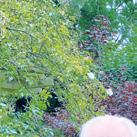
Having been previously deferred for National Service, I then did a four-year short service commission with the RAMC. At this time I was married to my late wife, and we had had our first child. I was Officer in Charge of the obstetrics units in Catterick, UK and Kinrara, Malaya (as it was then known). We returned to the UK in the autumn of 1962 to the delights of the severe winter of 1962-3.
In early 1963 I commenced general practice in Coventry, with four physicians. Even though patient numbers had reduced by 1,000 per physician, one would still frequently see 60-80 patients










per day. I finally decided that this meant I could not practise medicine the way I had been trained and accordingly emigrated in 1966 to the Canadian province of Newfoundland and Labrador. We were initially in Carbonear, which was an outport settlement 75 miles from the capital city of St John’s. Sadly, in March 1968 my wife died suddenly of acute myeloid leukemia. In 1970, having remarried, I relocated to St John’s and continued in family practice there.
Owing to my previous military service I was offered the post of physician to the Canadian Armed Forces base at the eastern limits of the city. This initiated a continued expansion into occupational health, with both federal and provincial appointments, and being medical consultant to the Registrar of Motor Vehicles for several years.
Due to circumstances beyond our control, the family practice closed in 1995. I continued private occupational health, and for two days a week worked as a clinical associate in the Radiation Oncology Department of the province’s teaching hospital in the city. I was also involved with Newfoundland and Labrador Medical Association, serving as Honorary Secretary and then PR Chairman, giving press, radio and television interviews.
In 2001 my wife and I returned to the UK and settled in mid-Wales.


Owing to my previous military service


I was offered the post of physician to the Canadian Armed Forces base at the eastern limits of the city.”





I subsequently worked for three years at Powys County Council, carrying out fitness to work assessments, before finally deciding as I approached my midseventies that it was time to hang up the stethoscope.
I can most assuredly say that I had an extremely rewarding and satisfying career in Canada, one that I very much doubt I would have been able to achieve in the UK. I view with some sadness the continued excess workload of physicians, and in particular the continued loss of training investment in physicians, with the result that they later emigrate, as I did.
I look back with great appreciation for the grounding I was given at KES, which in no small part enabled me to follow my career, and for the vision of the future of the School expressed by the then Headmasters A Annand followed by H M Porter, and the Board of Governors.

After leaving KES, John reported for duty at RMA Sandhurst where he studied French at the Special Language School and qualified as an army interpreter. He was commissioned into the Royal Artillery and subsequently went on to learn Italian and German, followed by Arabic and Hebrew, all under army auspices. He spent 25 years in military service, mainly in Germany and the Middle East. After retiring as a major in 1978, he joined British industry as a salesman and continued his sojourns into the Middle East, before finally becoming a freelance translator.

During lockdown his two grandchildren inspired him to write about his life of adventure and excitement in the army, and the fascinating characters he met along the way. His book of memoirs, The Adventures of an Itinerant Linguist (or Memoirs of a Military Interpreter), consists of a series of anecdotes in which he recalls many of the events, places and personalities from his postings, some of them hair-raising, some idyllic and some hilarious.
Published last year, the book is available via Amazon and all proceeds go to the Army Benevolent Fund. Now published in a second edition, the book has received exclusively five-star reviews.
After retiring as a major in 1978, I joined British industry as a salesman and continued my sojourns into the Middle East, before finally becoming a freelance translator.”


Was re-elected for a second term as a Governor of Oxford University Hospitals NHS Foundation Trust earlier this year and hopes to serve for a further three years, helping to achieve the aims of this institution.
Left KES in the summer of 1978 and joined the army in January 1979. After a full career as a Theatre nurse, including operational deployments in Afghanistan, Iraq, Kosovo and Rwanda, he left in early 2017. After several years working as a Theatre Manager at the Nuffield Hospital in Shrewsbury, Tim joined Help for Heroes as a Clinical Advisor, helping those who are struggling. He lives in Shropshire but covers Wales for his job, so spends quite a bit of time on the road. His main passions are cycling and live music, catching up on acts he may have missed first time around. In terms of cycling, he went out to the Alps this summer with a “likeminded group of masochists!”.
Is based in London and is the Chief Risk Officer for MaPS (Money and Pensions Service), a NonExecutive Director for Marsden Building Society and a Non-Executive Director of Sopra Steria Financial Services Limited.
Was awarded a PhD in Advanced Software Engineering in 2002. He works as the Chief Software Architect for Grass Valley Limited, a leading technology provider for the live media and entertainment market. Last summer, the company’s new software was used to produce television content for the Olympic Games in Tokyo for the whole of Europe.
To contribute news and photos for the next OELink or future OE e-newsletters, please email alumni@kesbath.com It’s great to hear about what you are doing now!
After five years in Canada, he returned to the UK in 2017 and is a Partner at Widcombe Surgery in Bath, and also works in urgent care. He and his wife Lia have two children, and he sings in the Bath Male Voice Choir.
1992 (right)
Had a catch-up in July with old KES friends Matthew Stone (far left) and Daniel Inman (centre) at Hall and Woodhouse in Bath. He said:

It was lovely to reminisce about happy fun times at KES.”
Captain Ian Feasey took command of the Royal Navy’s flagship aircraft carrier HMS Queen Elizabeth during the ship’s maiden operational deployment in September 2021. He has previously commanded the offshore patrol vessel HMS Severn and the Type 23 frigate HMS Monmouth.
A detective sergeant working with Surrey Police, he recorded a podcast interview with the British Association of Music Therapy earlier this year. He speaks about changing careers from classical music to the police, and his work with the Blue Light Symphony Orchestra and other projects supporting the mental health of emergency services professionals. Listen at: bamt.org/ DB/podcasts-2/seb-valentine
Has recently relocated with her husband and two children to the south of France, to help the family business with growing organic crops and producing craft beer. Follow on Instagram @brasserietanis, visit www.tanispaysanbrasseur.fr, or arrange a visit if you are in the Toulouse area.

Based in Aberdeen since 2005, he is a Principal Environmental Consultant for BMT Group, providing advice to various offshore and marine industries. A keen touch rugby player, he represented Scotland for three years and still plays casually.

Is a cultural historian specialising in the artistic cultures (particularly of women) of the 16th and 17th centuries. Having recently been awarded her PhD on early Stuart literary and visual culture, she is now researching for a book about women and artistic production at the court of Mary of Modena. She also works as a freelance arts writer, researcher, critic and art consultant, and has written for Apollo Magazine , The Art Newspaper, CNN Style , The Conversation and the Financial Times. More info at www.breezebarrington.com
Was Executive Producer of The Palace , which received a BAFTA nomination in this year’s British Short Film category.
Left to right: Matthew Stone, Daniel Inman and Mark PhilpotIs starting a career in the classical music industry at the Monteverdi Choir and Orchestras after six years working in Alumni Relations and Development at the University of Cambridge and Durham University.
Is a Product Lead in the R&D team at Darktrace, a global leader in cyber security AI. She manages the team of engineers who build the Darktrace web and mobile applications, which enable users to identify and prevent cyber attacks.
Alongside her career in the beer industry working for Budweiser Brewing Group, Georgia has been playing rugby for Battersea Ironsides Rugby Club (the home club of England international Kyle Sinckler) since 2018. She became 2nd XV captain after six months, and then became Women’s squad captain in 2021. After two unbeaten seasons, her current team, the 1st XV, have been promoted up a league to Championship 2 for the ’22/’23 season, and are now two leagues below Premiership level.

Was awarded an Academic Clinical Fellowship at the Bristol Dental Hospital by the National Institute of Health Research in 2021, and her time is divided between teaching, clinical work and research.
Visited the Pre-Prep in June this year, to speak in Assembly to Reception, Year 1 and Year 2 pupils about being safe in the sun. She is an ambassador for Skcin – The Karen Clifford Skin Cancer Charity, a specialist skin cancer charity dedicated to promoting the importance of sun safety and the early detection of skin cancer. Skcin have introduced several national educational initiatives and campaigns, including their ‘Sun Safe Schools’ national accreditation programme. The programme remains the only initiative of its kind and provides primary schools with comprehensive free resources to assist them in their duty of care to safeguard children against UV radiation and prevent skin cancer through education. She said:
It was a pleasure to help the Pre-Prep pupils to become Sun Safe Superstars! Sun safety is such an important topic and schools are in a privileged position to educate children on sun safety in order to prevent the development of skin cancer later in life.”

She is currently working in Bristol as a junior doctor and hopes to pursue a career in Dermatology.
Following her BSc in Equine Science and Business from the Royal Agricultural University, she graduated from UWE with a 1st class MSc in Business Management in 2020. She then worked for a construction company as a marketing co-ordinator, specialising in digital marketing and social media. This summer she moved to an advertising agency in Bristol to work as a project manager.
Signed his first senior contract with Bath Rugby in February this year and was also selected for the 35-player England squad who gathered for a three-day training camp in June. He comments:

For us as a team it was a tough season but, through all the adversity, I think we have grown together as a squad. With so many young players playing that year it’s only going to be positive for the future. I’m excited to start my fourth year with Bath, where I think we will exceed expectations with a new management group pushing us along the way. Hopefully there may be many more opportunities to represent the city in the future and maybe higher honours in the years to come!”

Helped GB win a silver medal in March when he competed as part of the Mixed Relay GB student team representing British Universities and Colleges Sport (BUCS) at the World University Cross Country Championships held in Portugal. He was also selected for the GB Junior team to compete at the Loughborough International in May and came third in the 1500m. Following an ankle injury setback this summer, his sights are now set on training for next season’s competitions.

A member of the Durham University band, Outerrings, he has also produced the group’s first singles: A Night (to Disengage) and Reface .


Memorable Moments: a special audio recording by former Headmaster Dr John Wroughton in which he shares memories and significant highlights from his early life and long career at KES (1965-1993).
Released earlier this year to all OEs on our digital mailing list, it is still available on KESBath.

At KES 1976-1985
Passed away 25 August 2021, after a long battle with liver disease, aged 54 Andy was part of my life for almost 40 years. I met him in 1981 when I joined KES in the 4th form; I was 13 and he was 14, and we quickly became good friends. He had struggled with his weight before that, but when I met him he was slim and sporty, and popular with the girls. At school it was clear that Andy had a talent for Maths. He took Maths O and A Levels a year early, and in the Upper Sixth he was awarded a place at Oxford. He had a wide circle of friends at KES owing to all his sporting and other interests. He was bright, self-assured, easy to like and a very good friend.

Although Andy was an excellent mathematician, an accomplished sportsman and popular with the girls, for balance I should note that he was a terrible dancer, which, I am assured, did not improve at Oxford. His singing career turned out alright though, with renditions of Iron Maiden and Ozzy Osbourne songs into the night on the way up the ‘drungs’ in Monkton after our teenage discos down in the village. He even reached the giddy heights, in December 2019, of performing at an outdoor Christmas gig with the Bath Rock Choir.
At the Teddy Hall May Ball at Oxford in 1987, Andy met Charlotta, a young au pair from Sweden. It was love at first sight, and I suspect she was the love of his life. It must have been serious – he even learned Swedish! – and I believe their breakup a few years later, when Charlotta decided to return to Sweden, was a profound disappointment for Andy.
After university, Andy moved to London to train as a chartered accountant with Price Waterhouse. We shared some memorable times and holidays together with different friends and I have Andy to thank for introducing me to my future wife, Kay. When we married in 1994 he was our best man. Andy was, of course, brilliant at PW. He qualified at the first attempt and, not long after, requested
a secondment to Stockholm. (We can only speculate why he chose Sweden.)
Andy was then always on the move. He took pleasure in telling people that in his 54 years he’d lived in 32 different places. After a few years back in London, he moved to Australia with Rio Tinto, first to Melbourne and then to Brisbane. Andy being Andy, he had no difficulty in making new friends there and he shared some great stories of his time down under, including various encounters with the local wildlife. In 2000 he moved back to England, but in 2006 he was off again, this time to France, where he was appointed as Finance Director of RecovCo in Compiègne.
Tragedy struck in 2007 when Andy and his siblings, Paul and Alexa, lost both parents within a short time of each other. Andy quit his job in France to be there for the family and diligently took care of the estate in his own inimitable, supremely professional way. When his sister Alexa got married in 2015, he was proud and pleased to step into his father’s shoes to give Alexa away.
Sadly, for Andy, the sudden and premature loss of his mum and dad, whom he adored, was unbearable and he lost his way, setting in train the terrible, final chapter of his life. Yet while he struggled with his demons, he was always there for his family and friends. When his brother Paul fell ill with bladder cancer in 2019, he stepped up again, taking him to appointments, visiting him in hospital and supporting his sister-in-law in the aftermath of Paul’s passing.
When I moved back to Bath in 2018, I felt very fortunate to have one of my oldest and best friends on my doorstep. I had my own difficulties at the time, and I was grateful for his support. During lockdown we formed a support bubble, and our weekly suppers were a welcome relief from the pandemic for both of us. I cannot imagine what life was like for Andy in the last year or two, having suffered another family tragedy, as well as trying to come to terms with his own illness and coping with its inevitable consequences. In some way, I have always felt that I was ‘brought back’ to
Bath to help Andy, and I am glad that I was there for him as best I could be. Andy leaves a huge hole in many people’s lives, and we will all miss him. I am certain that we will not forget him or cease to feel his influence. As another of his friends has said: “He was one of the biggest-hearted, most loyal friends one could have.” I have no doubt that he will continue to be present in all our lives for as long as we live.
Julian Crump (adapted from the eulogy given at Andy’s funeral)
At KES 1942-1947
Passed away spring 2022, aged 91
At KES 1941-1951
Passed away peacefully on 5 November 2021, aged 88
At KES 1936-1942
A former KES Governor
Passed away 28 May 2022, aged 95
At KES 1948-1958
Passed away autumn 2021, aged 80
At KES 1996-2003
Passed away 5 June 2022, aged 36





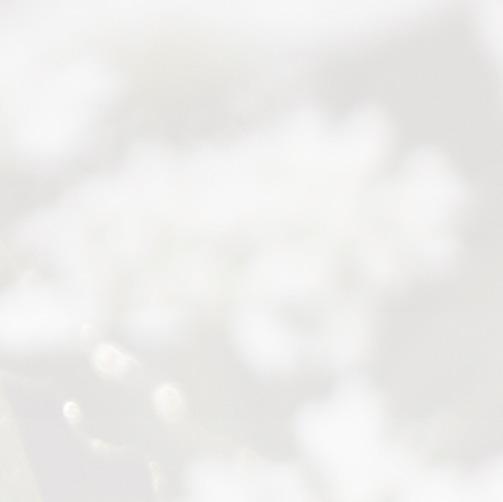




At KES 2002-2022
Passed away 1 August 2022, aged 63







Ayesha Rashid joined King Edward’s in 2002 and was a wonderfully dynamic, positive and engaging pillar of the Admissions team during her two decades of unstintingly loyal service. As Registrar, she worked closely with colleagues from all sections of the School to help ensure that KES was as full as appropriate with pupils who would thrive. That part of her legacy is a school in 2022 with the highest number of pupils in its history and with waiting lists in most year groups is testament to her success.
Behind each application, admissions process, successful offer and pupil finding their way to KES lies a multi-layered administrative operation and very human tale of care and consideration, diligence and engagement, compassion and, in many cases, hot chocolate and biscuits! The number of children whose journey through King Edward’s has been aided, supported and championed by Ayesha over the last 20 years undoubtedly runs into the many thousands, inspiring the many parents who came to her as a first point of contact for a wide range of schoolrelated matters years after their child had arrived at KES.
Ayesha always approached each application to King Edward’s with a huge amount of empathy, reflecting in part her own experience as a very proud parent of two boys who immersed themselves fully and very successfully in the KES experience and who are now thriving Old Edwardians and just as delightful as ever. Every aspect of that complex admissions journey was undertaken with commitment and a reassuring human touch that was an enormous help to nervous pupils and parents alike: responding to applications, organising visits and tours, helping to co-ordinate Open Days and Evenings, Activity Morning, Teachin, interviews and the entrance exam, processing offer letters, phoning parents to offer help and advice, welcoming children and parents to the School at different stages of that journey and much, much more.
Colleagues remember Ayesha with tremendous affection, recalling so many of the qualities that made her not just a very proud and successful Registrar, but also a great friend to so many: her warmth, kindness, generosity of spirit, calmness under pressure, loyalty, determination, single-mindedness, utter professionalism and commitment to doing the very best job that she could to an optimum standard. She is also very fondly remembered for her delightful sense of humour and fun, her ability to chat at length with prospective pupils and parents about almost any topic, and her remarkable capacity to recall the provenance of her many varied and colourful outfits that combined seamlessly with Ayesha’s gregarious personality to help her to light up any room.
Ayesha never stopped thinking of others, and even in the very difficult final months in which she so courageously fought the cancer that ultimately claimed her life far, far too soon, her first response when seeing and chatting to friends and colleagues was still, selflessly, to ask about them and their families, just as she always had done. Family mattered enormously and above all else to Ayesha – both her own and that of King Edward’s School. As Headmaster, I could not have asked for a kinder, more supportive or more loyal colleague than Ayesha; like so many others, I will miss her enormously, but also remember her with great affection, appreciation and gratitude.
Martin BodenAt KES 1990-2006
Passed away late November 2021
David was a lovely, kind man, and a supportive and superbly talented musician whom I was lucky to work alongside for one year when I first arrived at KES. He expertly taught composition and harmony elements on the Music A Level course, and I remember with particular fondness some of the truly outstanding and harmonically adventurous solo vocal works that he guided our top pupils to compose.
Rupert DruryAt KES 1965-1974
Passed away 16 July 2021, aged 86


Roy Shillaker and I arrived at KES on exactly the same day in 1965 and were to remain the best of friends until his sad death last year. He was appointed Head of Modern Languages on arrival and was to see the department double in size. He quickly mastered new technology, such as audio visual teaching methods. Furthermore, as leader of the Bath Schools’ French Exchange, he took many KES boys to Aix-en-Provence in the summer vacations. He was always keen to eschew car travel to school, coming not on buses but on bikes. Later, these were pedal cycles, but in his early years at KES he came to school on a Honda 90 (causing much mirth).
Roy was always much more than a classroom teacher. He revelled in helping boys to develop a full personality. Formerly a Wiltshire cricket and hockey player, he coached the School’s hockey and cricket teams. On a wider front, he organised the GCSE examinations and joined the school choir. All this was done with a great sense of humour. Then, after nine years of unstinting service, he left to join Corsham School. His heart had always been in Corsham, where he and his wife Gwen lived for the rest of Roy’s life.
His love of cycling was now given full rein. Roy and Gwen went on major trips with the local cycling club, sometimes for a month at a time, and later Roy did his cycling in Spain, staying with his son Michael. Despite all this experience, when he arrived at my apartment in Tenerife with grand cycling plans, Roy quickly shied off when he saw the steepness of Mount Teide. Back in Corsham, the three of us frequently met for meals, often joined by their sons Robert and Michael. Yes, indeed, Roy lived a most fulfilled life.
Dr John Wroughtonstrong,
supportive
with King Edward’s School.
an ongoing sense of community
heritage across
first come, first
basis
Invitations for this event will be sent in early 2023 to all the OEs in the above anniversary year groups for whom we have an email address.
join the digital mailing list, please email alumni@kesbath.com
All OEs and former staff are warmly welcomed to the worldwide community of Old Edwardians when they leave King Edward’s School.

Enjoy free life membership with great benefits:
OE e-newsletters full of the latest OE and School news
personal copy of the annual OElink magazine
OE Talkabouts – video/audio content
to a varied calendar of OE and School events
to the OE network for social and career contacts
opportunities to give back to the KES community with higher education and careers advice
OE social media: follow, like and share the word!
KESBathOEs
the Old Edwardians’, Bath
Visit www.kesbath.com/oe to find out how you can get involved with the OE community.
Apart from the OElink magazine which is sent by post (unless you confirm your preference for a digital copy), all OE e-newsletters, OE Talkabouts, bulletins and event invitations are sent by email.
Please update us with any changes to your contact details so we can continue to send you all the latest information and ensure you are on our future mailing lists.
alumni@kesbath.com or call 01225 464313 x 257